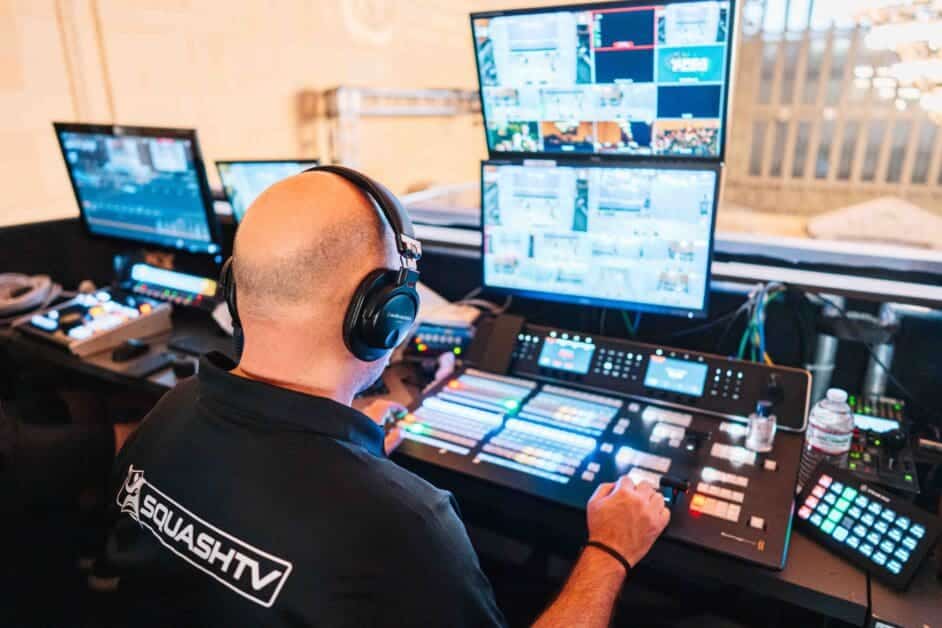The US Open is showcasing the most sophisticated TV production in the sport’s history and position squash closer to its Olympic debut at Los Angeles 2028.
SquashTV will deploy 18 cameras — the largest number ever used in a squash broadcast — including a cable-suspended camera over the glass show court, four super slow-mo/gimbal units, and two dedicated replay cameras focused solely on out-of-court lines.
The replay units enable instant officiating reviews, a first for squash, and aim to reduce controversy over line calls. The broadcast will also feature advanced analytics — shot counts, rally length, error rates, winner distribution — and real-time storytelling overlays.
PSA chief operating officer Lee Beachill described the production as “the most ambitious broadcast in the history of the sport … reflecting our ambition for where we want the sport to be as we look toward squash’s debut at the Olympic Games Los Angeles 2028.”
Comcast Business, as technology partner, is providing the connectivity and infrastructure to distribute the global feed to 89 countries.

US Squash president and CEO Kevin Klipstein added that the enhanced broadcast will “power tremendous collaboration and excitement across squash organizations globally” ahead of LA 28, when squash competitions will be held in a dedicated Comcast Squash Center at Universal Studios.
At the Paris 2024 Olympics, host broadcaster NBC deployed nearly 100 cameras, including high-frame-rate models for slow motion and IP-based transmission workflows, to capture and transmit events in 4K HDR across platforms.
The Olympic Broadcasting Services (OBS), charged with producing the “neutral” world feed, embraced cloud-based infrastructure and remote production to manage the massive scale and complexity of Olympic coverage.
The US Open is set to be a litmus test of how the sport will be portrayed when it makes its Olympic debut.
If the instant-review capabilities and multi-angle visual storytelling succeed, they could serve as templates for LA 2028’s squash coverage and officiating protocols. With global exposure and competitive stakes high, every pixel and angle will count.

